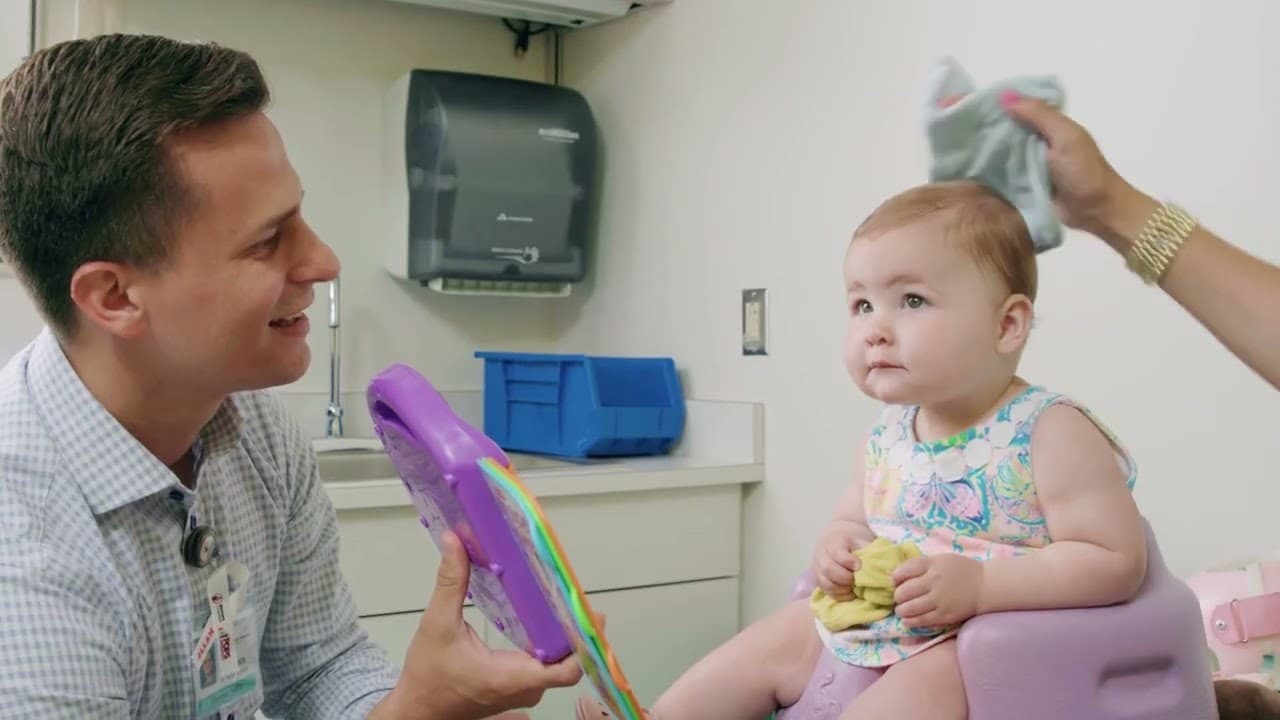Shriners Children’s offers helmet therapy (also called cranial remolding therapy) to correct the shape of a baby’s skull over time.
This treatment uses a special, custom-fit helmet to gently guide the natural growth of a baby’s head.
What Conditions are Treated with Helmet Therapy?
Young babies have skulls that are soft and susceptible to remolding from external pressures. Flat spots form from prolonged pressure on one side of the skull. Torticollis also increases the risk of flat spots by causing the baby to favor one side while lying down. Helmet therapy is used to correct these shape abnormalities of the skull in young babies.
Helmet therapy can help babies with a variety of conditions, including:
- Plagiocephaly: Flattening of one side of the head.
- Brachycephaly: Flattening of the back of the head.
- Dolichocephaly: A long, narrow head shape
- Craniosynostosis: An early fusing of the plates in a baby’s skull which may cause problems with normal brain and skull growth.
How Does Helmet Therapy Work?
Newborn babies’ skulls are made of soft plates with spaces between them. As a baby grows, these plates grow, gradually hardening and coming together. Shriners Children’s uses a cranial remolding orthosis. This custom-fit helmet is made of a plastic shell with a foam lining. It provides appropriate resistance over the rounded areas so that the natural brain and skull growth are directed into the areas of flattening. Adjustments are made frequently as your baby’s head grows. Early intervention is crucial for successful outcomes. In general, helmet therapy works best for children who start it when they are between 4-6 months old, during the period of rapid head growth.
What to Expect
At Shriners Children's, our Pediatric Orthotic and Prosthetic Services team will use a 3D scanner to measure and map your baby’s head. These measurements will be used to create the custom-fit helmet. Our staff will then review wear and care instructions with you.
During the first five days of treatment, you will be asked to follow a schedule that gradually increases the wearing time of the helmet each day. After the five days, the helmet is worn 23 hours a day with an hour off for bathing and hygiene. Regular follow-up visits are essential to monitor progress and make adjustments to the helmet as the baby’s head grows. The length of treatment depends on the baby’s age and how flat their head is at the start of treatment, but an average treatment lasts 3-5 months.
Specific treatments and services may vary by location. Please contact a specific location for more information.
Is helmet therapy painful for my baby?
No, cranial remolding therapy is not painful or uncomfortable for your baby.
Does my child need to wear the helmet all day?
Yes. The helmet must be worn 23 hours a day, whether playing, sleeping or feeding. Compliance with the schedule is essential for treatment success.
How long will treatment last?
Every child is different. Duration of treatment depends on the baby’s age and how flat their head is at the start of treatment, but an average treatment lasts 3-5 months.
Are there risks associated with helmet therapy?
Helmet therapy is generally very safe. Minor, potential risks include skin irritation and sweating. Your baby may experience extra sweating during the first few days of wearing the helmet until his or her body becomes used to it.

The staff at Shriners Children's meets you with such enthusiasm, optimism and knowledge that there is no gray area to panic about.

Shriners Children's Offers Comprehensive Care for Plagiocephaly
Services We Provide

Child Life Services

Pediatric Orthotic and Prosthetic Services (POPS)


